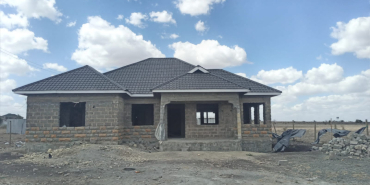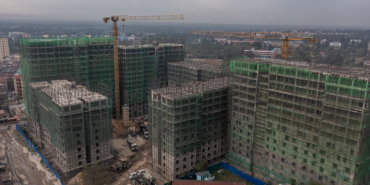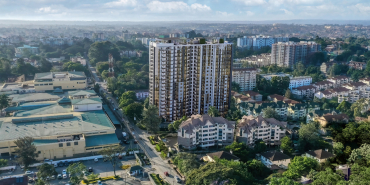Kenya’s Real Estate Embraces Faster, Smarter Construction

Kenya's real estate sector is undergoing a significant shift as developers increasingly adopt modern construction technologies to address the nation's housing shortage.
Driven by the need for speed, efficiency, and affordability, innovative approaches such as aluminium and tunnel formwork and prefabrication techniques are gaining traction, extending beyond Nairobi's urban boundaries. Over the past decade, Nairobi-based developers have pioneered the use of aluminium and tunnel formwork in large-scale housing projects. These systems, which use reusable moulds to shape concrete structures, significantly reduce construction timelines while maintaining consistent structural quality.
Tunnel formwork allows for the simultaneous casting of walls and slabs, making it particularly suitable for repetitive layouts in residential complexes and student accommodation. Aluminium formwork, with its lightweight and rapidly assembled panels, achieves high-precision finishes and minimises the need for post-casting adjustments.
Initially considered too expensive for smaller developments, these technologies are now becoming more viable in regional towns. Growing demand for housing in areas such as Nakuru, Kisumu, and Machakos, spurred by population growth and urban expansion, is causing developers to view the initial investment in modern formwork as a worthwhile trade-off. John Mwaura, CEO of Finsco Africa, whose company is behind the 1,600-unit Thika Grove Chania development, affirms that aluminium formwork allows units to be delivered within a year.
"A developer can deliver a housing unit within a year and pass the cost savings to homeowners while maintaining quality workmanship," Mwaura says.
The appeal of these methods extends beyond speed. By reducing the reliance on skilled labour and heavy lifting machinery, modern formwork lowers labour and equipment costs. Mwaura explains that aluminium systems produce clean concrete surfaces with precise measurements, often reducing or eliminating the need for plastering. This cuts material usage and supports environmental sustainability, an increasingly important consideration for institutional investors and financiers.
However, the uptake of these technologies across Kenya remains uneven. Traditional brick-and-mortar methods still dominate in smaller towns, where high initial costs and steep learning curves hinder widespread adoption. Nevertheless, developers such as Finsco Africa remain optimistic.
"Land in these towns is generally cheaper than Nairobi," notes Mwaura. "Therefore, although the initial cost of deploying the aluminium form is high, we are able to still deliver affordable units in these areas."
The Covid-19 pandemic further highlighted the efficiency of prefabrication techniques, in which building components are manufactured offsite and assembled on location. Prefabricated and modular buildings enabled healthcare systems to rapidly scale up patient facilities during the crisis, showcasing their advantages, including reduced waste, shortened timelines, and improved quality control. These benefits are increasingly resonating with developers seeking more efficient construction models.
With the country facing an estimated annual housing deficit of over 200,000 units, there are growing calls for the government to incentivise the use of innovative construction methods. Systems such as 3D volumetric construction, which involves producing complete structural modules in factory settings, and precast panel systems are being considered as potential solutions. These approaches offer speed, standardisation, and predictable quality, regardless of weather conditions.
Other innovations, including precast concrete foundations and flat slab construction (where concrete slabs rest directly on columns without beams), are redefining the possibilities for both residential and commercial buildings. These methods are particularly well-suited for Kenya's climate variability and rapid urban expansion, offering resilience and adaptability without sacrificing design efficiency.
The integration of digital technologies is amplifying the effectiveness of these construction techniques.
Building Information Modelling (BIM) and artificial intelligence tools are making it easier for teams to plan, coordinate, and optimise site activities. According to Mwaura, such integrations "become an interesting way to lower the cost of construction." Developers also report a knock-on effect in financing. Those who implement sustainable practices tend to receive better terms from financial institutions, which are increasingly aligning their lending criteria with environmental and social governance (ESG) standards.
Despite the numerous advantages, modern construction is not without its challenges. While aluminium formwork offers durability, it can be susceptible to damage if mishandled, a risk that is especially prevalent when deployed by inexperienced workers. Its high thermal conductivity poses challenges to concrete curing in extreme conditions, and the rigidity of the system makes it poorly suited for intricate architectural designs or mid-construction changes. Brenda Nyawara, Vice President of the Architectural Association of Kenya, warns, "Customised changes during the construction timeline can lead to expensive and tedious processes to create or adjust new panels."
Nyawara also points out that due to their relative novelty in the local market, only a limited number of artisans possess the necessary experience to work effectively with these systems. This skills gap presents a significant barrier to scaling the use of modern methods across diverse geographies. To mitigate these challenges, developers are advocating for sustained investments in training and professional development. Benchmarking, knowledge-sharing, and supervision during high-risk tasks such as concrete pouring are being promoted as essential safeguards.
"Workers' safety is greatly dependent on proper information, instruction, training, and supervision," Mwaura emphasises.














Add new comment